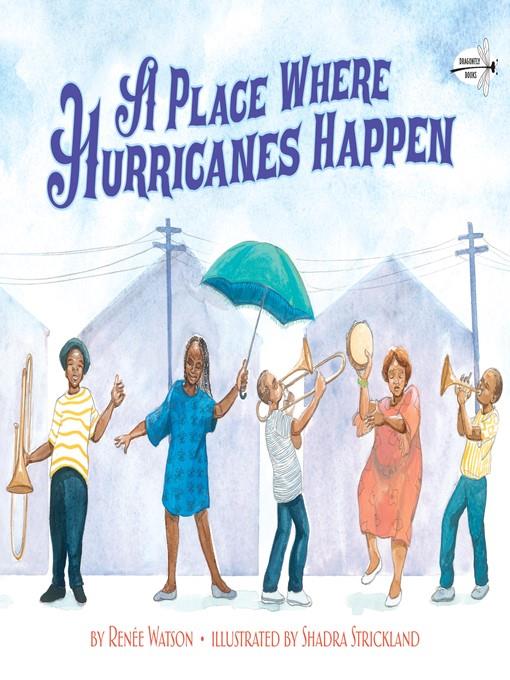
A Place Where Hurricanes Happen
فرمت کتاب
ebook
تاریخ انتشار
2011
Lexile Score
590
Reading Level
0-2
ATOS
3.3
Interest Level
K-3(LG)
نویسنده
Shadra Stricklandشابک
9780375983078
کتاب های مرتبط
- اطلاعات
- نقد و بررسی
- دیدگاه کاربران
نقد و بررسی

May 31, 2010
Strickland's (Bird) quietly powerful watercolors make this story of four fictional Ninth Ward children caught in Hurricane Katrina especially affecting. As firsttime author Watson moves among the perspectives of the children—Adrienne, Michael, Keesha, and Tommy—Strickland presents scenes of everyday life, the fearsomeness of the storm itself (a wordless spread shows blocks of tidy houses up to their roofs in water), the wreckage, and the rebuilding. Before Katrina, the children play hide-and-seek and ride their bicycles together. They know Katrina is coming, but expect little harm: "The sky don't look gray at all./ Seems like the sun is gonna shine forever," says Adrienne. Some relocate, some remain, though the children are reunited in a homecoming that brings muted joy; some of their neighbors are gone forever. But Katrina is not all there is of New Orleans, and when they gather in their much-changed neighborhood a year later, they agree: "We're from New Orleans,/ a place where hurricanes happen./ But that's only the bad side." In the same way, although Watson's story delivers some difficult emotional blows, it has plenty of sweetness, too. Ages 7–10.

June 1, 2010
K-Gr 3-New Orleans friends Adrienne, Keesha, Michael, and Tommy take turns speaking in spare free verse. Their story begins with: "We're from New Orleans, /a place where hurricanes happen./But that's only the bad side." The happier side is illuminated by their close friends and family. Soon the neighborhood faces Hurricane Katrina, and each family copes with it in different ways. Tommy goes to Houston, Adrienne evacuates to Baton Rouge, Michael stays in his home, and Keesha waits at the Superdome for five days to be rescued. The text is lyrical and realistically portrays a child's point of view, deftly describing in a few words how the children are affected. Michael says: "Tommy's family packed up and left./And Adrienne is leaving too./I give her the picture I drew yesterday./Guess we're not playing together tomorrow." The evocative watercolor-and-ink illustrations in soft pastels and grays limn the devastation but also the good times of the neighborhood to great effect. Perhaps the most striking picture is the spread showing the flooded streets on which the children had played the day before. This is one of the best books for children to come out of the tragedy of Katrina. In a few short verses, it beautifully encapsulates the story of the tragedy in words and pictures that children can understand, without dwelling on the horror, but emphasizing the hope and healing power of friendship and community."Judith Constantinides, formerly at East Baton Rouge Parish Main Library, LA"
Copyright 2010 School Library Journal, LLC Used with permission.

May 15, 2010
Grades 2-5 Like Jewell Parker Rhodes Ninth Ward (2010), Watsons debut picture book for older readers tells the story of Hurricane Katrina and its aftermath for a young audience. In free verse, four young friends on a New Orleans street speak in alternating voices about the storm. First there is the fun they have together in the neighborhood, then the tension and terror as the hurricane comes nearer and hits the city, and then finally the devastation that follows. Tommys family leaves town. Adrienne is leaving for Baton Rouge. Keesha waits five days at the Superdome for a bus and then, later, lives in a trailer outside her broken home. From an attic window, Michael and his sister watch their whole block disappear underwater. Both the words and pictures personalize the events. What was it like to be caught in the storm, to return to a neighborhood that you barely recognize, to find your friends again? In vibrant, mixed-media images, award-winning illustrator Strickland extends the drama, feeling, and individual stories.(Reprinted with permission of Booklist, copyright 2010, American Library Association.)

























دیدگاه کاربران